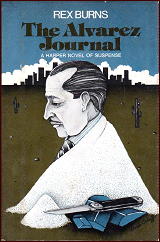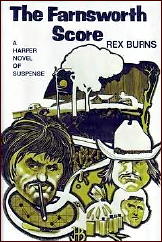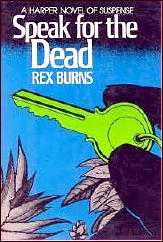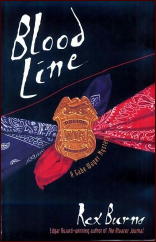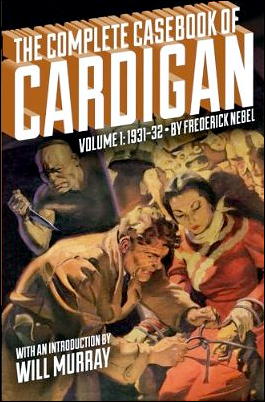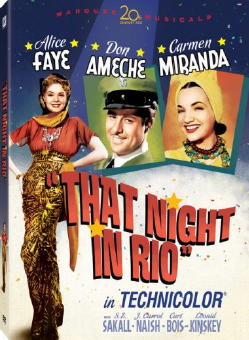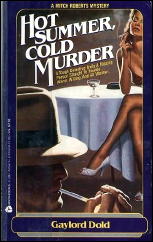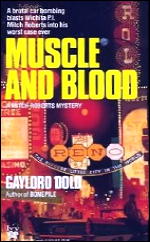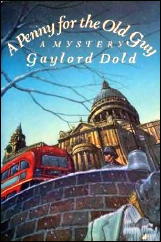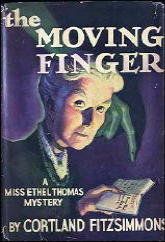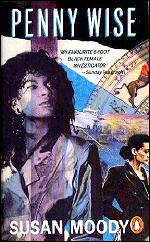March 2012
Monthly Archive
Sat 31 Mar 2012
REVIEWED BY DAN STUMPF:
I recently watched a series of films in a free association mode, beginning with Iphigenia (1977). The movie was adapted from Euripides by the writer/director whose name is usually anglicized as Michael Cacoyannis, and if you’re not familiar with the play, it deals with the agonies of Agamemnon, whose Troy-bound armies get bottled up in Greece when the winds refuse to blow.
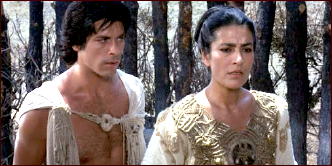
As the troops grow restive and mutinous, an oracle tells Agamemnon he must sacrifice his daughter Iphigenia if he wants to appease the gods and get moving. How Agamemnon deals with the conflict, and at what personal expense, forms a telling drama.
Most of the actors’ names would mean little to you, but there’s a vulnerable and heart-breaking heroine, a convincingly conflicted Agamemnon, and Irene Papas as Clytemnestra (Agamemnon’s wife and Iphigenia’s mother) brings new dimensions to outrage and bitterness.
So after this I had to watch Helen of Troy (1956), producer/director Robert Wise’s super-spectacle on the Trojan War, and a hard film to beat if you like simple-minded action, lavish production, and lots of skin.
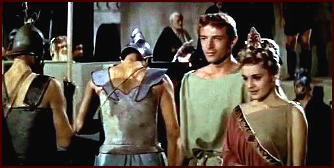
Faced with a script that allowed little or no character development; Wise compensate by creative casting: Robert Douglas, the villain of a dozen swashbucklers, plays a crafty Agamemnon, and as soon as he comes on screen, you know all you need to know about the character.
Likewise Stanley Baker’s tough-guy Achilles, Harry Andrews’ lantern-jawed Hector, Sir Cedric Hardwicke as stately Priam and Torin Thatcher as a scheming Ulysses. One actor puzzled me though: Ronald Lewis playing Aeneas seemed terribly familiar, but I couldn’t quite place where I’d seen him. A bit of research revealed why he seemed so familiar; yet unrecognized – he was Mr. Sardonicus.
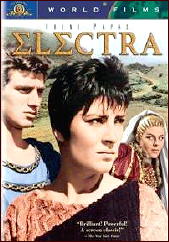
And after that, of course, I had to finish Agamemnon’s saga with Electra (1962), Cacoyannis again adapting Euripides, this time the story of Agamemnon’s return home, his murder by Clytemnestra, and the vengeance of his daughter Electra — played with steely resolve by Irene Papas, who played Clytemnestra fifteen years later in Iphigenia.
Where Helen was sheer spectacle, painted with a wide-and-brightly-colored palette, Electra and Iphigenia are pure Drama, done mostly outdoors without sets, and they achieve a simple intensity that struck me as remarkable.
If (like me) you languished in the doldrums of Greek Drama in school, you might do well to take a look at these. They are, in every sense, an awakening.
So after that, of course, I had to watch Mourning Becomes Electra, Dudley Nichols 1947 adaptation of Eugene O’Neill’s take on the play. In his time, Nichols authored some memorable screenplays (including Stagecoach) but what he was doing here quite escapes me. Admittedly O’Neill can be heavy going, but I can’t think why Nichols apparently told his cast to emote like a troupe of performing seals.
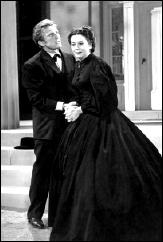
No one who has seen Rosalind Russell in His Girl Friday would even recognize her lip-writhing, eye-rolling histrionics here. Or if they did, perhaps they’d just politely look away.
IPHIGENIA. Greek Film Center, 1977. Original title: Ifigeneia. Irene Papas (as Eirini Papa), Kostas Kazakos, Kostas Karras, Tatiana Papamoschou, Christos Tsagas, Panos Mihalopoulos. Director: Michael Cacoyannis (as Mihalis Kakogiannis).
HELEN OF TROY. Warner Brothers, 1956. Rossana Podestà , Jacques Sernas, Cedric Hardwicke, Stanley Baker, Niall MacGinnis, Nora Swinburne, Robert Douglas, Torin Thatcher, Harry Andrews. Director: Robert Wise.
ELECTRA. Finos Film, 1962. Original title: Ilektra. Irene Papas, Giannis Fertis, Aleka Katselli, Manos Katrakis, Notis Peryalis, Theodoros Dimitriou. Director: Michael Cacoyannis (as Mihalis Kakogiannis).
MOURNING BECOMES ELECTRA. RKO Radio Pictures, 1947. Rosalind Russell, Michael Redgrave, Raymond Massey, Katina Paxinou, Leo Genn, Kirk Douglas, Nancy Coleman, Henry Hull, Sara Allgood, Thurston Hall. Based on the play by Eugene O’Neill. Screenwriter/director: Dudley Nichols.
Fri 30 Mar 2012
Posted by Steve under
ReviewsNo Comments
IT IS PURELY MY OPINION
Reviews by L. J. Roberts
BELINDA BAUER – Blacklands. Simon & Schuster, US, hardcover, January 2010; trade paperback, January 2011. First UK edition: Bantam Press, hardcover, 2010.
Genre: Suspense. Leading character: Steven Lamb. First novel. Setting: Devon, England.
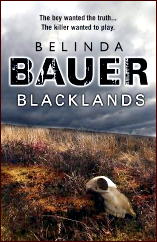
First Sentence: Exmoor dripped with dirty bracken, rough, colorless grass, prickly gorse, and last year’s heather, so black it looked as if wet fire had swept across the landscape, taking the trees with it and leaving the moor cold and exposed to face the winter unprotected.
Sociopath Arnold Avery raped and murdered children; he admitted to six whose bodies were found. One who was not found was Billy Peters. The impact severely affected his family.
Eighteen years later, his nephew, 12-year-old Steven Lamb believes if he can find Billy’s body, it will bring the family back together. Spending his spare time digging holes in the moor bring Steven to the point of writing the imprisoned Avery in an attempt to figure out what will convenience the killer to provide the location.
The very opening of the book creates a sense of place and an atmosphere which is both gloomy and compelling.
There are no perfect characters here; only human ones. Steven’s gram has become embittered and closed off following the disappearance of her son, Billy. Steven’s mother; closed off from her mother’s affection has a string of failed relationships.
“Uncle Jake,†one of Steven’s mom’s men, provides Steven with the outward displays of love and understanding but is only around for short periods of time. Steven’s friend Lewis who realizes Steven is the smarter of them but needs to dominate the relationship.
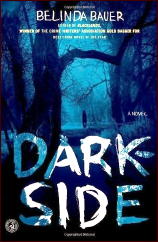
Steven is by no means perfect. He’s a shy boy, afraid of confrontation, and knows his mother prefers his younger brother, yet he constantly strives for the thing we all want; love and acceptance.
Avery, the imprisoned murderer is as far from perfect as one can get, but he is the person with whom Steven must form some level of a relationship in order to gain what he needs. Through Bauer, we understand how dangerous and impaired is Avery without her having to indulge in graphic detail. In fact, in some ways, the hints and inferences are even more effective than detail would be.
What is particularly wonderful about Bauer’s writing is that the characters alive and understandable; she shows us Steven becoming more mature in his thinking and reasoning, yet still as a 12-year-old-boy. At one point, she talks about Steven’s comprehension of Avery being a sociopath, of the insignificance of one person to the whole of the universe and that asking Avery for help is akin to asking the Devil for mercy.
This is sophisticated stuff for a young boy, but it works through our understanding of Steven’s need. She is also one of those wonderful authors who can take an inanimate object and make it not only an important element, but almost a character in the story.
Bauer does write dialogue well, although there’s not a lot of it as the book is written narrative. She often exhibits an wonderful turn of phrase: “Avery adapted so fast, he’d have blown a hole straight through Darwinism.†While I’m one who really likes dialogue, the narrative, written in third person, past tense, works here mainly because of the quality of her writing.
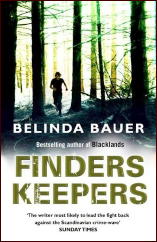
This is not an action-packed, rapid-fire action novel. The melancholy of the story’s opening sets the pace, but never did I find the book to drag.
There is excellent suspense. At time she lets it build and then backs it down. It then starts to build again, slowly and relentlessly to an intense transition from where Steven was courting the Devil, to where he has fully awakened and I found myself almost catching my breath.
The one real flaw for me was a dependence on some rather large coincidences. Otherwise, the book would have earned top marks. Still, it was very close and one of the best reads I’ve had in awhile and I can certain see why it won the Crime Writers’ Association (CWA) Golden Dagger Award for 2010. There is no question that Ms. Bauer’s next book, Darkside, will be on my reading list.
Rating: Very Good Plus.
Editorial Comment: Belinda Bauer’s third book is Finders Keepers (2012). Village policeman Jonas Holly appears in both this book and Darkside, Bauer’s second.
Fri 30 Mar 2012
THE ARMCHAIR REVIEWER
Allen J. Hubin
REX BURNS – The Killing Zone. Viking, hardcover, 1988. Penguin, paperback, 1989.

Rex Burns’ latest about Denver homicide detective Gabe Wager is The Killing Zone. I’ve muttered before about Wager, a gloomy, morose, irascible chap with a recently acquired payload of guilt to boot.
But this one has a strong contemporary plot, with good suspense and character dynamics, and I was well swept along with the flow. A kid finds the city’s latest corpse in a vacant lot. It’s Horace Green, city councilman, black, hero and defender of the black community. Now wearing a bullet hole in the back of his head.
Racial motives spring to mind, and the city gathers itself for explosion. Wager’s boss wants him to look only in one white place for a killer, for a tension-defusing solution. Wager, who rarely takes orders from anyone and routinely works sixteen-hour days, will look everywhere.
— Reprinted from The MYSTERY FANcier,
Vol. 11, No. 1, Winter 1989.
The Gabe Wager series —
1. The Alvarez Journal (1975)
2. The Farnsworth Score (1977)
3. Speak for the Dead (1978)
4. Angle of Attack (1979)
5. The Avenging Angel (1983)
6. Strip Search (1984)
7. Ground Money (1986)
8. The Killing Zone (1988)
9. Endangered Species (1993)
10. Blood Line (1995)
11. The Leaning Land (1997)
Rex Burns also wrote four books with PI Devlin Kirk as the lead detective. All 15 books have recently been published as ebooks by Mysterious Press.
Wed 28 Mar 2012
Reviewed by Walker Martin:
FREDERICK NEBEL – The Complete Casebook of Cardigan. Volume 1: 1931-1932. Altus Press, hardcover/paperback, February 2012.
Matt Moring of Altus Press has just published a collection of stories by Fred Nebel that not only is an excellent collection of hardboiled fiction but also is quite historically significant. Fred Nebel (1903-1967) was one of the early Black Mask authors who started to write detective stories in the hardboiled style. He sold his first story to the magazine in 1926 and editor Joe Shaw encouraged him to join Dashiell Hammett and John Carroll Daly in the writing of hardboiled, tough, fast action stories.
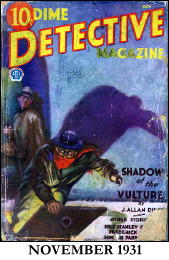
Nebel had a long running series starring Captain Steve MacBride and a reporter by the name of Kennedy. This was followed by a later series about a private eye named Donahue. When Harry Steeger started Popular Publications, one of his early titles was Dime Detective and he offered Nebel and some of the other Black Mask authors a higher rate if they would also write for him.
The top writers for Black Mask were probably getting around 3 cents a word, so this meant an increase to 4 cents, which at the time was very good money. a 10,000 word novelette could bring in a $400 check. In the depression era this was like over $4,000 in today’s money.
The first issue of Dime Detective appeared with the date of November 1931, and it contained the first Nebel story for the magazine. Nebel during the period 1931-1937 would go on to write 44 of these hard driving, tough tales, all starring Jack Cardigan of the Cosmos Detective Agency. At first he was in charge of the St. Louis branch but then moved on to the main headquarters located in New York city.
I’ve been collecting Dime Detective since 1969 and have read almost all the Cardigan stories, so when I received this book, I thought I’d just read a couple stories to make sure I still felt the same way about the quality and then file the book away with my other hardboiled books written by Hammett, Chandler, James Cain, and Paul Cain.
However, I was surprised as to how well the stories held up to a second reading and before I knew it, I had read all of them in a space of a few days.
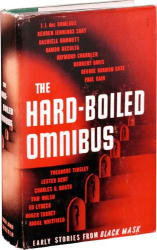
Altus Press plans to publish all 44 Cardigan stories and this first volume contains the first eleven, written in 1931-1932. There will be not only an additional three volumes, each around 400 pages, but also volumes reprinting Nebel’s series starring Kennedy and MacBride, and Donahue. The book has a nice introduction by Will Murray and each story has the original John Fleming Gould illustrations.
Now, though I’ve mentioned Nebel with such names as Hammett and Chandler, I do not by any means place him on the same level. They are at the very top. I would place these stories on the the second level along with such writers as Paul Cain, Norbert Davis, Robert Reeves, Merle Constiner, etc, most of whom wrote for both Black Mask and Dime Detective.
These writers I consider to be very good to excellent, while Hammett and Chandler are in the great class, often considered legitimate, no doubt about it, American Literature.
So this collection and the future ones which will soon be published by Altus Press, gets my highest recommendation. If you try and collect the original pulps you will run into two problems. The first being that they are now very rare and hard to find, and the second being the prices are very high. Copies of Dime Detective in the 1930’s are now over the $100 per issue level and some are selling for $200 or $300 each. The Chandler issues are even higher.
One interesting subject is discussed by Will Murray in the introduction and has also been covered before by Steve Mertz and others. This involves the reaction that Joe Shaw encountered when he was compiling the stories for The Hard-Boiled Omnibus, the first hardboiled anthology, published in 1946. He wrote Fred Nebel asking for permission to publish one of his Black Mask stories and Nebel turned him down saying that he considered his pulp work “dated” and not up to the quality of his best work.
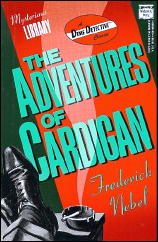
This is another example of how blind some authors can be concerning the quality of their own fiction. In the early 1930’s Nebel broke into the slick market and he actually considered this slick work to be far better than his pulp stories. He certainly got paid a lot more and this must of blinded him to the relative quality.
The slicks had a very high percentage of women readers and the editors felt that stories should have a strong love or romance element. Nebel was willing to write this type of fiction for such high paying magazines as the Saturday Evening Post, Liberty, Collier’s, and Woman’s Home Companion.
I collect the slicks also and have read some of Nebel’s slick work and it cannot even begin to compare to his best pulp work as written for Black Mask and Dime Detective. I can understand him writing the slick formula because the pay was so high compared to the pulp rates. He was receiving thousands of dollars for short slick work compared to hundreds for pulp novelettes.
He also wrote three novels and thought these would be remembered but nothing ever came of his hardcover writing career. While his slick magazine work has been completely forgotten, his pulp stories have appeared in just about every hardboiled pulp anthology. Mysterious Press even published six of the Cardigan novelets in a paper edition over 20 years ago but it failed to sell.
Copies of this collection are easy to obtain for around $30 for a high quality paper edition and for $10 extra you can get a hardcover. I recommend the hardcover because of the historical and literary significance of the book. You can order from the Altus Press website or from Mike Chomko Books. Amazon.com also carries the paper edition.
I encourage all lovers of hardboiled and pulp fiction to support this publishing project.
We do indeed live in The Golden Age of Pulp Reprints.
Contents: (All stories reprinted from Dime Detective.)
“Death Alley” (November, 1931)
“Hell’s Pay Check” (December, 1931)
“Six Diamonds and a Dick” (January, 1932)
“And There Was Murder” (February, 1932)
“Phantom Fingers” (March, 1932)
“Murder on the Loose” (April, 1932)
“Rogues’ Ransom” (August, 1932)
“Lead Pearls” (September, 1932)
“The Dead Don’t Die” (October, 1932)
“The Candy Killer” (November, 1932)
“A Truck-Load of Diamonds” (December, 1932)
Sun 25 Mar 2012
A TV Series Review by Michael Shonk
BLUE LIGHT. ABC, 1966. Rogo Production in association with 20th Century Fox Television. Cast: Robert Goulet as David March. Christine Carère as Suzanne Duchard. Created by Walter Grauman and Larry Cohen. Executive Producer: Walter Grauman. Executive Script Consultant: Larry Cohen. Producer: Buck Houghton. Theme: Lalo Schifrin. Music Supervision: Lionel Newman.
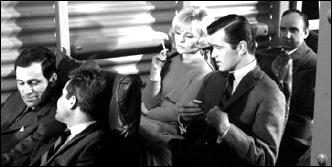
Blue Light is a forgotten TV spy series that, while not the equal, is worthy of mention with other TV spy series such as I Spy and Mission: Impossible.
Before the Nazis began their advance across Europe, America put eighteen sleeper agents inside Germany. One was American journalist David March. Only the few American government officials behind the Blue Light organization knew the truth, while the rest of the world believed March had betrayed his country and all he loved to join the Nazi war effort. In one episode March learned the woman he loved had committed suicide because of his support of the Nazi cause.
Occasionally the Nazis used March as a spy, but his usual role was writing and broadcasting propaganda. His underground contact was Suzanne, who fell in love with March as she posed as French Gestapo agent who hated him.
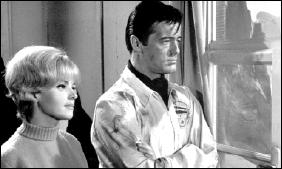
Considering the creative talent behind Blue Light, it is not a surprise the series was a gritty WWII spy drama with nourish touches. Larry Cohen is best known for his genre films such as Black Caesar, It’s Alive, and Maniac Cop. He also created the TV series Branded, Coronet Blue and The Invaders.
Walter Grauman is one of television’s iconic directors (Untouchables to Murder, She Wrote). He also won the Distinguished Flying Cross for his service as a fighter pilot in WWII Europe. There is an excellent interview of Walter Grauman by Stephen Bowie at the Archive of American Television. (Follow the link.)
The series did not pull any punches. Episodes featured dramatic examinations of moral issues as well as surprising twists and great action. March did not just knock out the guard as most TV good guys would. Instead, March did not hesitate to kill the guard with a knife in the back.
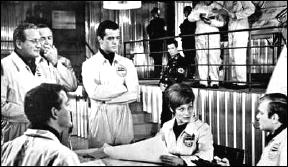
There were few easy solutions to the many choices March was forced to make. In one episode he was forced to choose between some citizens who had escaped a Nazi labor camp or getting a top secret Nazi weapon to the Allies in England.
Known more as a singer, Robert Goulet was surprisingly believable as David March, double agent. On the other hand co-star Christine Carère proved to be a liability to the series and weaken the possible romantic subplot. The guest stars included some of the best TV characters actors of the 60s, especially European actors on their way to America. (See the episode index below.)
The production was shot overseas at Bavarian Studios in Munich, Germany. According to an interview of Robert Goulart in Stars & Stripes (2/16/66), Blue Light was the first American TV series filmed in color in Europe.
The music soundtrack by Lalo Schifrin and others (including Pete Rugalo, Mullendore and David Gruson) was a special delight. Listen to episodes such as “Sacrifice!†and “Agent of the East†and you can hear occasional hints of Schifrin’s future work in Mannix and Mission: Impossible.
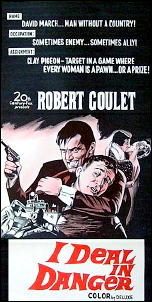
Blue Light had the potential to be something special, but it was limited by its half hour format. While the short time kept the action moving, it eliminated the opportunity to further develop the characters. The villains were often underdeveloped and weakened by the speed March outsmarted them.
It is best to watch the episodes in order. The first four episodes told the story of David March’s mission to destroy a top secret Nazi weapon base in Grossmuchen, Germany. “Return of Elm†and “The Secret War†are based on events in earlier episodes.
The first four episodes were linked together and released as I Deal in Danger (1966). I have not seen the movie version, but it is available on DVD. The series itself is available only in the collector-to-collector market.
EPISODE INDEX —
“The Last Man” (1/12/66). Written by Larry Cohen. Directed by Walter Grauman. Guest Cast: Werner Peters, John Ragin, John Alderson. â— The Nazis know about Blue Light, an American undercover spy ring of eighteen agents. Seventeen have been killed. Now, Captain Elm is out to get rid of the man he believes to be the last man of Blue Light, American journalist now Nazi propagandist David March.
“Target David March” (1/19/66). Written by Larry Cohen. Directed by Walter Grauman. Guest Cast: Edward Binns, Hans Reiser, Geoffrey Frederick. â— With Elm gone, March still needs to convince some Nazis he is loyal to the cause before he can be assigned to the top-secret weapon base in Grossmuchen. Meanwhile a British officer has sent in three commandos to kill the American traitor David March.
“The Fortress Below” (1/26/66). Written by Larry Cohen. Directed by Walter Grauman. Guest Cast: Eva Pflug, John van Dreelan, Peter Capell, Manfred Andrae. â— March gets the assignment he wanted, the top-secret weapon base. The base is buried 200 feet underground and while nearly impossible to sneak in, it is even harder to get out. Unable to sneak any weapons in, March must figure out how to destroy the base.
“The Weapons Within” (2/2/66). Written by Larry Cohen. Directed by Walter Grauman. Guest Cast: Eva Pflug, Horst Frank, Alexander Allerson, Dieter Eppler. â— The naïve female German scientist who had agreed to help March’s blow up the base has second thoughts when she is faced with causing the death of her friends at the base.
“Traitor’s Blood” (2/9/66). Written by Larry Cohen. Directed by Walter Grauman. Guest Cast: Jerry Ayres, Henry Beckman, David Macklin. â— March visits his younger brother being held in a Nazi POW camp. His brother had lied about his age to join the Army and prove he was not a traitor like his brother.
“Agent of the East” (2/16/66). Teleplay by Donald S. Sanford, story by Larry Cohen. Directed by James Goldstone. Guest Cast: Jan Malmsjo, Dick Davalos, James Mitchell. â— To keep the plans for a heavy water plant from Nazi scientists, March must get to a captured Russian spy being held in Gestapo headquarters.
“Sacrifice” (2/23/66). Teleplay by Dick Carr, story by Larry Cohen. Directed by William Graham. Guest Cast: Larry Pennell, Barry Ford, James Brolin. â— The Nazis want March to convince a kidnapped All American hero to talk. An Allied bomb hits the Gestapo jail trapping March, the hero and two Nazis underground with no hope of rescue.
“The Secret War” (3/2/66). Written by Larry Cohen. Directed by Walter Grauman. Guest Cast: Roger C. Carmel, Kevin Hagen, Gail Kobe, Fred Holliday, Gilbert Green. â— Two Russian agents, who knew the Russian agent from “Agent of the East,†threaten to expose March and Suzanne if he does not work for them instead of the Americans.
“Invasion by the Stars” (3/9/66). Teleplay by Jack Turley, story by Curtis Sanders. Directed by Gerd Oswald. Guest Cast: Francis Lederer, Curt Lowens, Jason Wingreen. â— Allies need Operation Sea Lion, Hitler’s planned invasion of England, delayed. March attempts to convince Hitler’s astrologist to advise Hitler to postpone the invasion.
“The Return of Elm” (3/23/66). Written by Larry Cohen. Directed by Robert Butler. Guest Cast: Werner Peters, Malachi Throne. â— Elm, the villain of “The Last Man†episode, is back. The one Nazi who knows March is an American agent, Elm escapes a British POW camp. Knowing the Nazis believe he is the traitor, Elm returns to Berlin to kill March and clear his name.
“Jet Trail” (4/6/66). Written by Dan Ullman. Directed by James Goldstone. Guest Cast: Philippe Nicaud. Tony LoBianco, Lamont Johnson. â— March poses as an American OSS officer to help the French resistance recover a top secret German jet engine from a crash.
“How to Kill a Toy Soldier” (4/13/66). Written by Merwin Bloch and Roger E. Swaybill. Directed by Leo Penn. Guest Cast: Michael Shea, Donald Losby, Greg Mullavey. â— An 11-year-old Nazi witnesses March kill a courier for the plans to every rocket site in Norway. March faces the choice of killing the child or exposing himself as a spy.
“The Deserters” (4/20/66). Writer: Curtis Sanders. Director: Gerd Oswald. Guest Cast: Ken Lynch, Stuart Margolin, George Backman, James Davidson. â— The Germans send March into battle posing as an American soldier. He is to learn what direction the Allied forces will take on the Italian front. A Gestapo agent travels with March to watch him.
“The Other Führer” (4/27/66). Written by Walter Brough. Directed by James Goldstone. Guest Cast: David Sheiner, Paul Carr, Jack Colvin. â— A German aristocrat seeks the Allies aid to overthrow Hitler. The Germans catch and execute the Allies’ agent sent to meet the aristocrat and send March in the Allies agent’s place.
“The Key to the Code” (5/4/66). Written by Brad Radnitz. Directed by Walter Grauman. Guest Cast: Hans Gudegast (Eric Braeden), Alex D’Arcy, Erik Holland. â— While in France to do a radio program, March and Suzanne learn the Germans have set a trap for an upcoming Allies Commando attack. The Germans have broken the underground code putting March and Suzanne at risk and unable to warn the Allies about the trap.
“Field of Dishonor” (5/11/66). Written by Jamie Farr and H. Bud Otto. Directed by James Goldstone. Guest Cast: Steve Ihnat, James Frawley. â— High-ranking Nazi General, who has long been suspicious of March’s loyalties, attempts to defect to the Allies.
“The Friendly Enemy” (5/18/66). Written by Harold Livingston. Directed by James Goldstone. Guest Cast: Mark Richman, Robert Doyle, Richard Carlyle, James Doohan, Mort Mills. â— March is ordered to kill a German scientist who is close to creating an Atomic bomb for the Nazis.
Sat 24 Mar 2012
REVIEWED BY WALTER ALBERT:
THAT NIGHT IN RIO. 20th Century Fox, 1941. Alice Faye, Don Ameche, Carmen Miranda, S. Z. Zakall, J. Carrol Naish. Musical direction by Alfred Newman; Hermes Pan, choreographer; music and lyrics by Mack Gordon and Harry Warren. Director: Irving Cummings. Shown at Cinevent 35, Columbus OH, May 2003.
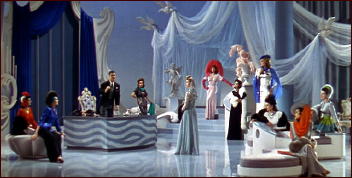
Oh, that eye-popping technicolor! Great color cinematography makes you want to lap it up like sugar candy, and there was a time when that kind of color was not an unusual occurrence on the screen.
And That Night in Rio, starring a very popular trio of musical comedy performers, matches its eye-grabbing color with vibrant performances that provide some of the movie magic (and it doesn’t have to involve ghosts) that used to be more commonplace.
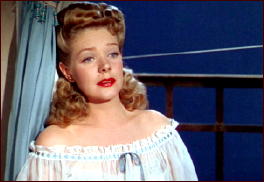
Well, maybe Alice Faye, a favorite of my errant youth, is somewhat matronly and reserved, but she still cuts a mighty lush figure in a nightgown. (Yes, there’s a semi-naughty bedroom sequence that stays fairly primly but still suggestively on the right side of the Production Code.)
And Carmen Miranda exudes so much energy that it’s relaxing to have Faye taking center screen, with her mellow voice purring seductively in the lyrics for “They Met in Rio.” Ameche’s dual roles may not have the malevolent fierceness of Chaney’s in The Blackbird [reviewed here ], but they suit the well-constructed comic plot to a “T.” A delightful opening film for the Saturday night screenings.
Editorial Comment: To watch a five minute clip from this movie, featuring Carmen Miranda and Don Ameche singing “Chica Chica Boom Chic”, go here on YouTube. Spectacular, indeed!
Fri 23 Mar 2012
IT’S ABOUT CRIME, by Marvin Lachman
GAYLORD DOLD – Bonepile. Ivy, paperback original, 1988.
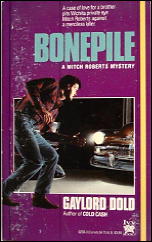
Bonepile by Gaylord Dold, the third Mitch Roberts novel, is more ambitious than the Rafferty book by W. Glenn Duncan (reviewed here ) but ultimately less satisfying.
Dold is another writer to be commended for moving the private eyes’ mean streets from New York and Los Angeles to more unusual locales. In this case it is a rural farming community in Kansas where Roberts, on vacation from Wichita (“…the world’s largest small town”), has gone to recuperate. One can feel the heat and wind blowing off the plains, imagine walking through the park in the middle of town, and understand the people, including their worship of the St. Louis Cardinals.
The book is set in 1956, but Roberts in true Lew Archer fashion permits guilt to cause him to try to solve a 1940’s murder. Unfortunately, Dold, like Archer’s creator, suffers from a severe case of a disease I believe I was first to diagnose and name: “metaphoritis.”
Its primary symptom is overwriting, with swelling of metaphors, those necessary usages which transform ordinary into very good writing. When poorly used, as in Bonepile, we get such lines as “Night grew in me like a tumor” and “The tree itself creaked as if its heart were broken.”
Sometimes, in an effort to be imaginative, Dold is merely anatomically unsound as he writes, “Sweat filled my mind and overflowed.” I suspect that the reason for all the overwriting and padding is that this time around he had too slim a plot and, based on the unsatisfactory ending, didn’t know how to conclude his book.
Yet I perceive real writing talent here, and Dr. Lachman suspects this case of metaphoritis will not be fatal.
— Reprinted from
The MYSTERY FANcier,
Vol. 11, No. 1, Winter 1989.
The Mitch Roberts series —
Hot Summer, Cold Murder. Avon, pb, 1987.
Snake Eyes. Ivy, pb, 1987.
Bonepile. Ivy, pb, 1988.
Cold Cash. Ivy, pb, 1988.
Muscle and Blood. Ivy, pb, 1989.
Disheveled City. Ivy, pb, 1990.
A Penny for the Old Guy. St. Martin’s, hc, 1991.
Rude Boys. St. Martin’s, hc, 1992.
The World Beat. St. Martin’s, hc, 1993.
Samedi’s Knapsack. St. Martin’s, hc, 2001.
Thu 22 Mar 2012
Posted by Steve under
Reviews[4] Comments
REVIEWED BY DAN STUMPF:
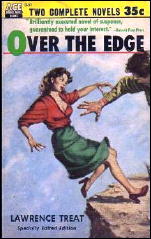
LAWRENCE TREAT – Over the Edge. Ace Double D-51, reprint paperback, abridged edition, 1954. Published dos-Ã -dos with Switcheroo, by Emmett McDowell. Originally published by William Morrow & Co., hardcover, 1948.
Over the Edge plumbs some of the same pipes as The Big Clock, to good effect. Alec Rambeau, the central character, is empaneled on a jury in a murder trial and finds that the murdered woman in the case was recently his lover — he didn’t recognize her married name.
Nagged by guilt (he’s married) Alec pushes for conviction of her suspect/husband in a nicely-turned scene that reads like a reverse 12 Angry Men, skillfully turning the other jurors to his side and sending the accused to the Death House … only to discover later that the man is innocent.
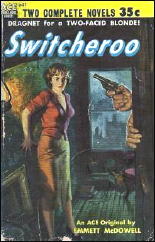
What follows is a tricky, twisting detection-dance, as Alec tries to investigate the murder and the dead woman’s relationships without revealing his own involvement. Neat enough, but the author puts yet another spin on things as we begin to question just how innocent Alec really is.
Writing in the third person, Treat reveals/withholds just enough to keep us guessing right up to the last suspenseful chapter, which is skillful writing indeed, and the kind of thing I’ll look for more of.
Oh. The flip side of this Ace Double is Switcheroo, by Emmett McDowell; a mystery-comedy that could be charitably described as Belabored.
Thu 22 Mar 2012
THE BACKWARD REVIEWER
William F. Deeck
CORTLAND FITZSIMMONS – The Evil Men Do. Stokes, hardcover, 1941.
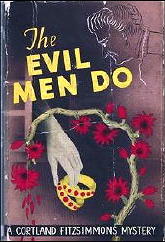
Having turned down several lucrative offers to go to Hollywood and do screen writing, mystery writer Ethel Thomas finally accepts as a ploy to help out her niece, an aspiring movie actress.
The niece’s fiance, fighting for her honor, has apparently killed a man. It’s obvious that the “killing” is but a variation of the old badger game, but these two youngsters get themselves involved with a blackmailer who runs a gambling club. Naturally, he is soon bumped off. The niece, the fiance, the niece’s mother, and Thomas are unlikely suspects.
Since the idea should be a winner from the start, there ought to be a law that authors writing about septuagenarian lady mystery writers who also detect produce at least a halfway decent novel. If there were such a law, Fitzsimmons would be given twenty years without the option.
— From The MYSTERY FANcier, Vol. 11, No. 1, Winter 1989.
The Ethel Thomas series —
The Whispering Window. Stokes, 1936.
The Moving Finger. Stokes, 1937.
Mystery at Hidden Harbor. Stokes, 1938.
The Evil Men Do. Stokes, 1941.
Editorial Comment: In a crime fiction writing career that extended from 1930 to 1943, Cortland Fitzsimmons wrote or co-authored another thirteen novels, two of which featured Arthur Martinson as the leading character, and two with Percy Peacock. I know nothing about either of the two, but Bill Deeck’s review of the author’s book The Girl in the Cage, displays an equal lack of enthusiasm for his work: “…reading Fitzsimmons is like watching grease congeal.”
Wed 21 Mar 2012
SUSAN MOODY – Penny Dreadful. Fawcett Gold Medal, paperback; 1st US printing, August 1986. First published in the UK: Macmillan, hardcover, 1984.
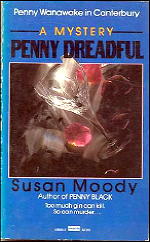
The Penny in the title refers to Penny Wanawake, girl photographer, whose sleuthing activities place her as as nearly the perfect opposite of Agatha Christie’s Miss Marple as can be imagined. While she is British, Penny is tall, young, black (corn-row braided hairdo), a sophisticated world traveler, and while a possessor of one live-in lover at home, she is not adverse to having others when she’s not.
But returning to the title of this one, it’s at least a double, if not triple, play on words. The dead man in the affair is a writer of cheap blood-and-thunder pulp fiction, supplementing his day job as a schoolmaster at an exclusive boys’ school in Canterbury. Penny dreadfuls, in other words. He’s a dreadful man, too, since his books incorporate much of the scandalous activities his roving eyes have uncovered.
And so no one really minds when he’s found dead. The police think the cause of death was a heart attack. Snooping in the kitchen, Penny finds the smell of gin in the sink, and she wonders if somebody had added something to it before disposing of it. Her interest in the case is not that of bringing a killer to justice, but more of an intellectual exercise in discovering the truth.
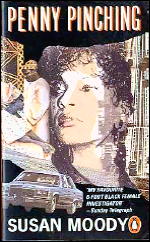
There are any number of suspects. Adding to the thrill of the chase is the competition Penny is provided by the visiting policeman from Detroit she is currently sharing living quarters with. On the other hand, though, what Penny Wanawake doesn’t have is a “Watson” to bounce theories off of, and to be bedazzled by her investigative techniques and abilities and so on.
We (the reader) follow her activities through the story from nearly beginning to end, and are usually given access to her thoughts, except (of course) when it really matters. Thus when it comes time for revealing the killer, we find that she had eliminated many possibilities lone before, although there was little in what she said or did that would have allowed us to come to the same conclusions.
Nonetheless, while the story might have moved a bit too slowly for me, I did enjoy Penny Dreadful as a detective puzzle, one populated by people I could see as individuals. Susan Moody has wicked sense of humor, too, maybe even a bit sharper than mine. I could probably quote you parts I liked all day long, but here’s a paragraph I thought you might like. It’ll tell you, at least, what I’m talking about. From pages 141-142:
She turned toward the Wellington Dock. On the other side of a stretch of water, the stone-built Customs house squatted like a garden gnome. There was a white-capped figure up in the glass observation room, staring keenly out to sea in case someone was trying to invade the country. There were several yachts making their way slowly out into the Channel. Words like ‘spanking’ and ‘jaunty’ and ‘marlin-spike’ came to mind. The wheel’s kick and the wind’s song. All that nautical jazz. It was enough to make even a Swiss banker break into a hornpipe.
— Reprinted from Mystery*File 31,
May 1991 (slightly revised).
The Penny Wanawake series —
Penny Black. Macmillan, 1984.
Penny Dreadful. Macmillan, 1984.
Penny Post. Macmillan, 1985.
Penny Royal. Macmillan, 1986.
Penny Wise. Joseph, 1988.
Penny Pinching. Joseph, 1989.
Penny Saving, Joseph, 1990. No US edition.
All but the last were published by Gold Medal in the US as paperback originals.
After ending the Penny Wanawake series, author Susan Moody began another, this one featuring professional bridge player, Cassandra Swann. Six of the latter’s adventures were recorded between 1993 and 1999, four of them appearing here in the US.
Next Page »








